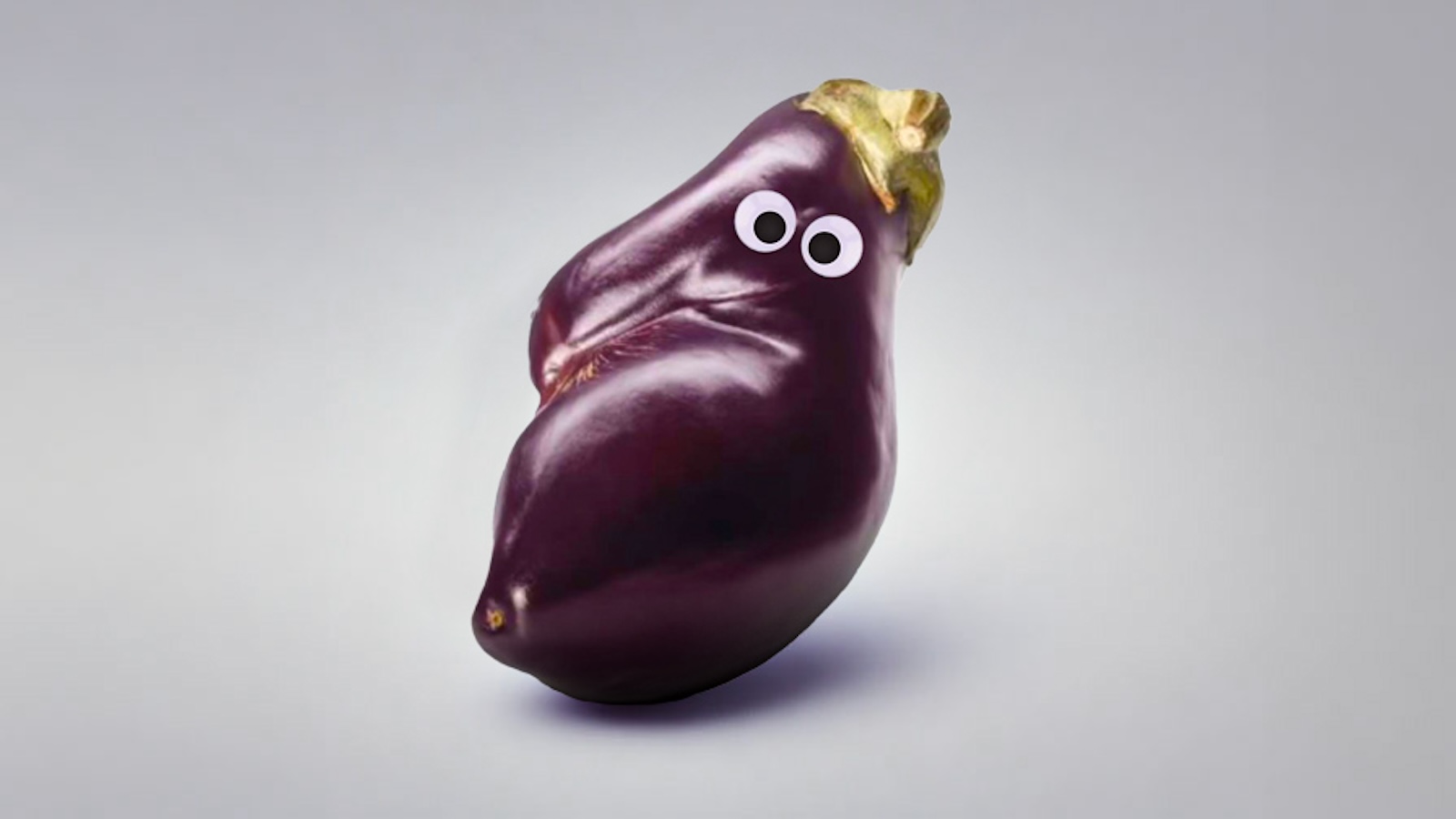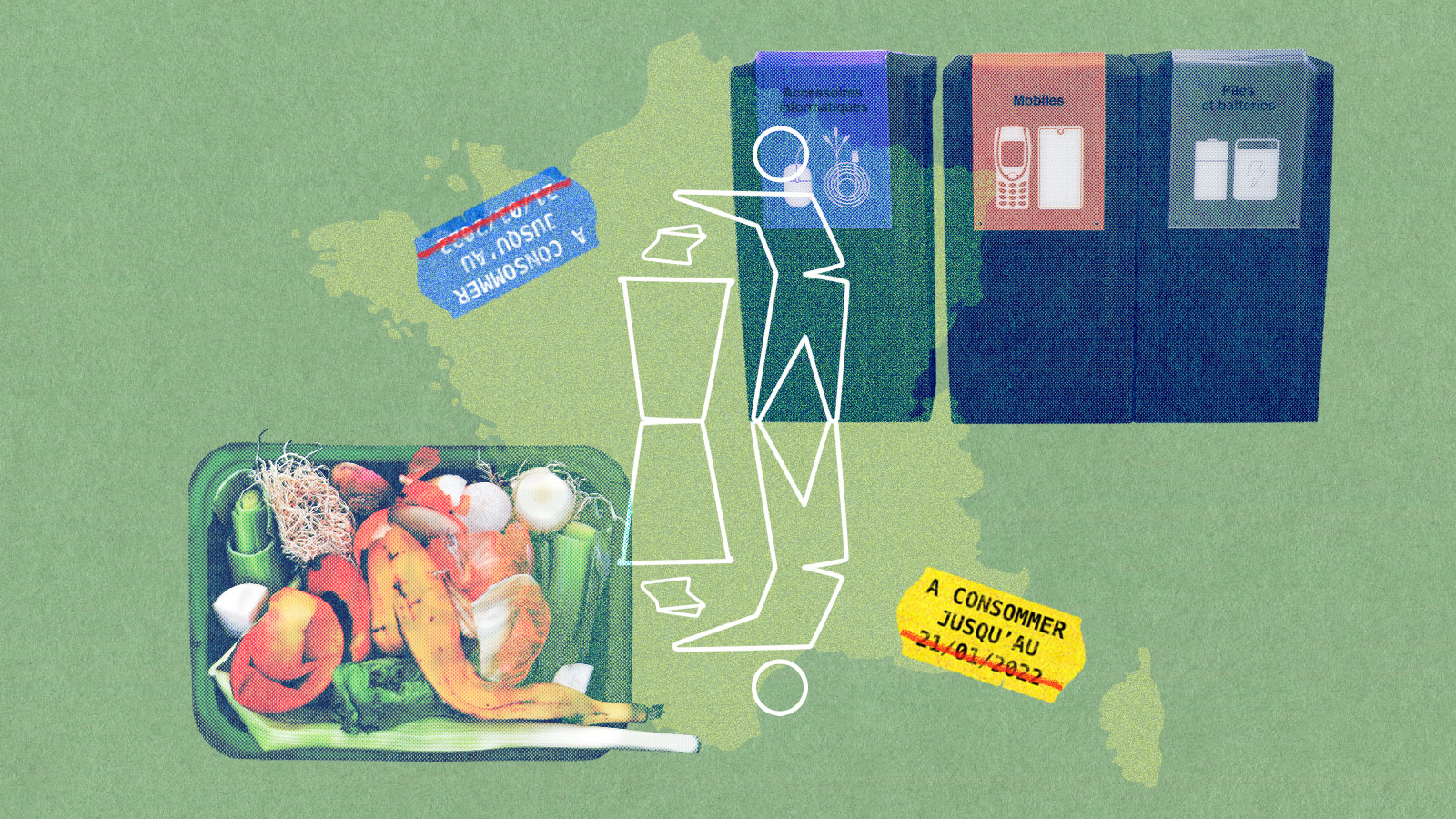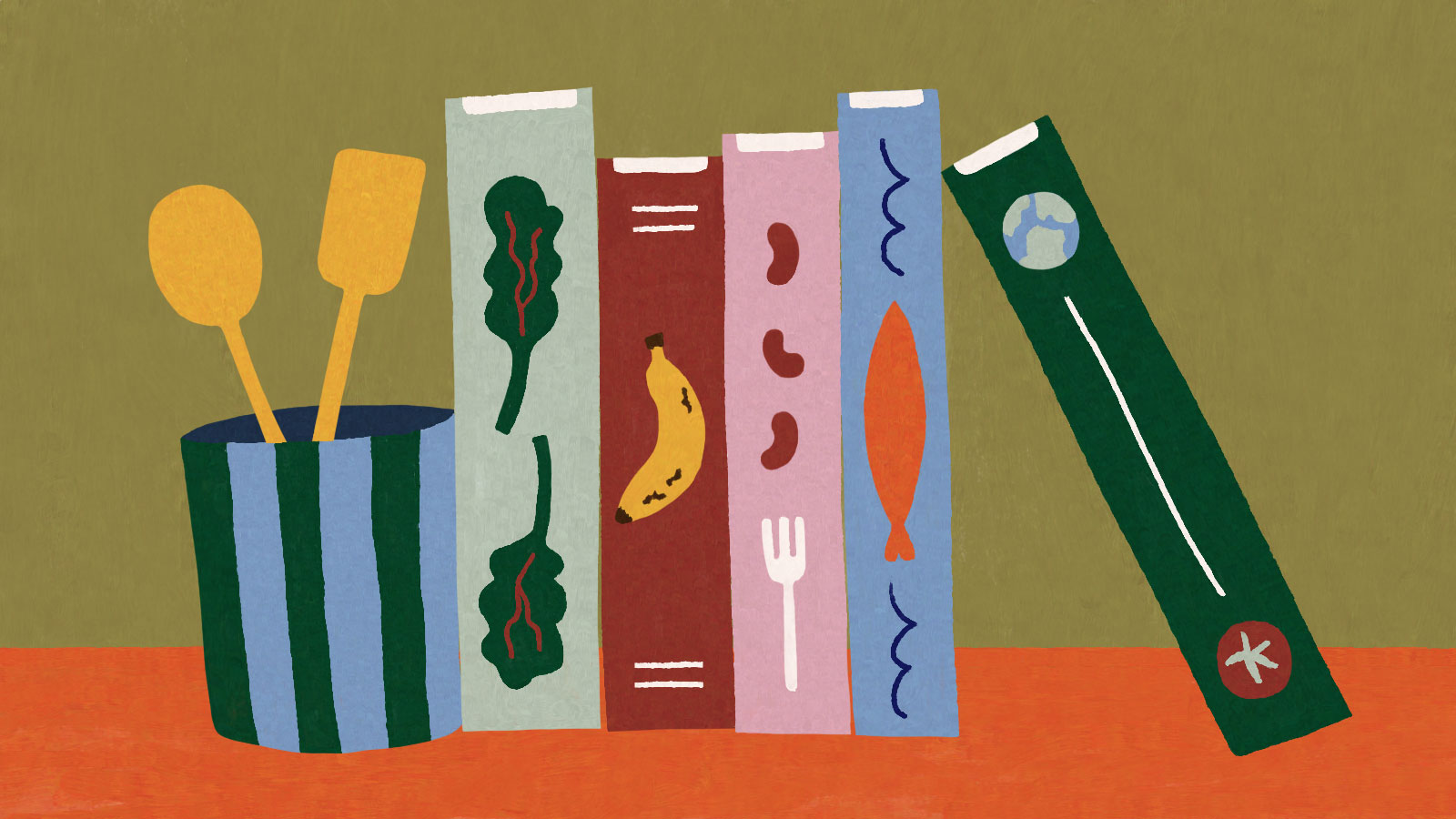You may have seen them wielded by prank-loving grandmas in department stores, peeking out from robotic vacuum cleaners, or adorning statues on college campuses. But googly eyes, those cartoon-like eyeballs often found in arts and crafts projects, aren’t just good for making people smile. If you ask researcher Kacy Kim, when used correctly, a set of sticky little eyes can be a clever tactic to influence consumers — specifically, to get them to buy fruits and vegetables that might otherwise become food waste.
An associate professor at Bryant University, Kim is the lead author of a recently published study in the journal Psychology & Marketing that found that when googly eyes are placed on pictures of irregular-appearing vegetables, or human names are used to describe misshapen fruits, consumers are more inclined to buy “ugly” produce.
The team was inspired by past marketing campaigns that attempted to anthropomorphize imperfect produce, and spent six years putting together their case that making irregular produce appear more human could increase sales.
“How can we think about any inhuman produce like a human? Googly eyes,” said Kim. “By enhancing the attractiveness of the ‘ugly’ produce, the outcome is going to be, consequently, cutting waste.”
Billions of pounds of food across the nation end up wasted every year. Much of that loss is driven by over-purchasing, and strict regulations for food donations, but at least part of the problem is that U.S. consumers widely avoid taking home fruits and vegetables that are too small, oddly shaped and discolored, or cosmetically scarred. Some estimates suggest as much as 20 percent of produce ends up in landfills and incinerators because of cosmetic imperfections, with a degree of that due to consumer rejection of visually “suboptimal” foods.
Despite a wave of companies in recent years attempting to turn a profit on the problem of “ugly” produce contributing to food waste, consumer preferences haven’t shifted much, particularly at mainstream supermarkets. And roughly 40 percent or so of harvested fruits and vegetables are deemed “imperfect” by wholesalers and retailers, contributing to the mammoth emissions footprint of food loss and waste. In part, this is grounded in an overarching consumer preference: When given the choice, people still tend to steer clear of imperfect items in favor of those that look like they think they should.
Kim’s team argues that the problem is that supermarkets, and even “ugly” food specialty companies, are going about it all wrong. It’s not about discounting irregular produce to try and get people to buy it, it’s about making that produce appealing enough that it doesn’t need to be discounted in the first place. That’s where the googly eyes come in.
“By testing and adding some human characteristics, we examine whether that effort will increase the attractiveness of the produce, and [whether] that attractiveness is going to be increasing the purchasing of the produce and consuming of the produce,” said Kim.
The team experimented first with adding visual cues like googly eyes on irregular-looking eggplants, showing study participants pictures of normal or abnormal eggplants, either with or without googly eyes. In a second study, they tried giving imperfect fruit gender-neutral human names — such as “Taylor” the four-tailed lemon and “Jordan” the three-headed strawberry. In both cases, they discovered that the bulk of people found the imperfect produce more appealing, and were more open to purchasing it when it had been anthropomorphized.
It’s all about how the human psyche is programmed to see the world, explained study co-author and Bryant University professor Sukki Yoon. “We process things unconsciously as we are told to. ‘Apples are supposed to look like this,’ that is a human bias. By extension, it is a type of stereotyping,” said Yoon.
Popular “ugly” produce companies — Yoon cited Misfits Market as an example — are structured around discounting the irregular produce they sell, which he said veers into a problematic territory, as lowering the price on such products communicates to consumers that a conventionally imperfect stalk of celery is worth less than an aesthetically perfect one. “What they do is, ‘Oh, we’ll give you a discount. You get more, but it’s ugly. You take it and you live with it.’ No, that kind of trade-off may not be necessary in the first place, if we process those [foods] as an individual, perhaps with a personality,” he said.
In fact, this contradicts past studies that found discounted pricing of such products to compensate for imperfections can help enhance consumer perceptions of quality.
The team also found that the perceived origin of imperfect produce matters. Participants were either shown videos of human hands placing tomatoes in boxes, which they were told was filmed at a small local farm that supplied fresh vegetables to grocery stores, or a clip of robotic hands boxing produce for an agricultural corporation presented as a high-tech operation that distributed nationwide. It turned out that anthropomorphizing imperfect produce believed to be sourced from local farmers had little impact, as consumers were already more inclined to buy irregular-looking fruits and vegetables if they knew it came from a small, local operation.
“If you go to the farmers market and buy five apples, you expect those five apples to look different. If you go to the big grocery chain store, and you pick five apples, you may want to pick those five apples that look alike,” said Yoon.
Anthropomorphizing imperfect fruits and vegetables has been shown to move the needle on shifting consumers’ intentions to purchase such produce in the past. In 2014, “The Grotesque Apple” and “Ridiculous Potato” were promoted in an advertising campaign helmed by a French supermarket chain that sold the produce at discounted rates. The following year, “Beautiful on the Inside” launched as a U.K. campaign that promoted the idea that flavor and nutrition trump aesthetics when sold at cheaper price points. And in 2016, a major U.S. supermarket launched a “Produce with Personality” campaign aimed at discount shoppers in Pittsburgh.
Kim and Yoon’s new research emphasizes how much simpler marketing tactics, such as googly-eyed eggplants, can be used by retailers to increase consumer demand for irregular-looking produce, and reduce emissions associated with food waste — without needing to slash prices.
The idea is something Libby Christensen, a state food and agriculture specialist at Colorado State University Extension, applauds. However, she questions whether it’s possible to draw such a direct connection between increasing sales of irregular produce and reducing greenhouse gas emissions. The research doesn’t take into account the emissions associated with any produce products as they travel through the supply chain, noted Christensen, nor does it consider that while some produce may be considered aesthetically “ugly” without impacts on the integrity of the product, this is not always the case.
“It’s really complex to try and understand disposal on the farm versus disposal at the grocery store, and the potential unexpected consequences of shifting that disposal wasn’t taken into consideration by the article,” said Christensen. (When asked, both Kim and Yoon were unable to provide specifics quantifying just how much this strategy may actually divert food waste emissions, which is an issue that has haunted the broader “ugly” produce industry.)
Christensen would like to see research on food loss and waste, particularly around the diversion of “ugly” produce, take into account the full life-cycle emissions of such systems, and to at least attempt to quantify the climate impact this kind of intervention may have.
Besides, literally asking every supermarket to put googly eyes on irregular produce might not be realistic, and would generate quite a bit of waste of its own. That’s not truly what Kim’s team is proposing — they’re thinking more about marketing campaigns and ads. But while outfitting an unusually tiny tomato with a pair of googly eyes isn’t likely to radically change historically entrenched consumer habits, nor will naming a lumpy carrot “Alex” tilt America’s emissions trajectory with food waste, campaigns like these could spark small changes in how consumers consider what to buy and eat. That, in itself, may be a win.
“I was personally really scared of eating eggplant. Whether it’s ugly or pretty, I never purchased [it],” said Kim. “But after I did this research, now I’m an eggplant shopper. And I’ll be happy to grab any googly-eyed eggplant.”





